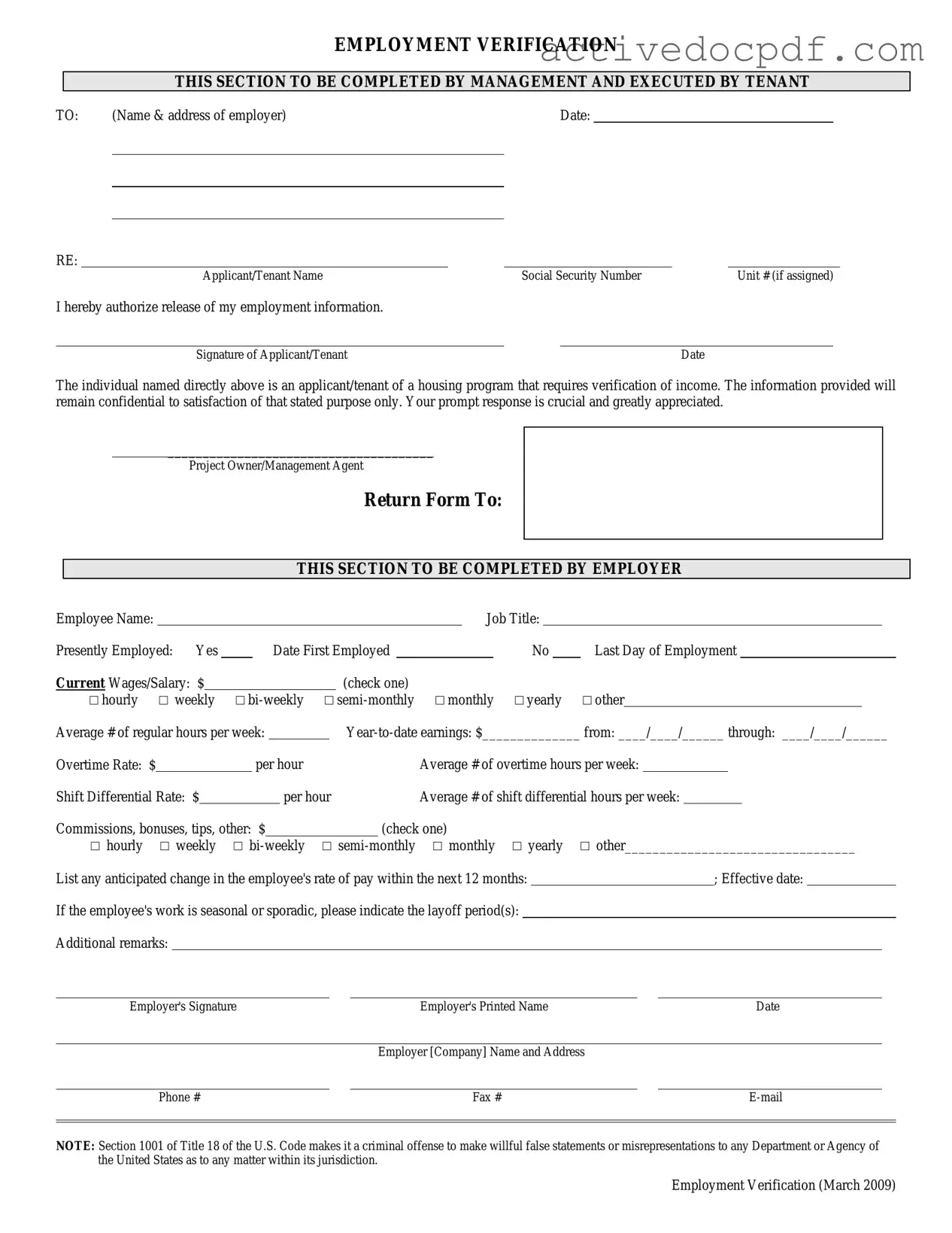An Employment Verification Form is a document used to confirm a person's employment status, job title, and other relevant details. It is often required by lenders, landlords, or potential employers to verify a candidate's work history and income. This form helps ensure that the information provided by an applicant is accurate and trustworthy.
Various parties may request an Employment Verification Form, including:
-
Employers during the hiring process
-
Landlords when screening potential tenants
-
Financial institutions for loan applications
-
Government agencies for benefit applications
The Employment Verification Form generally includes the following details:
-
Employee's name and contact information
-
Employer's name and contact information
-
Job title and description
-
Dates of employment
-
Salary or hourly wage
-
Reason for leaving (if applicable)
You can obtain an Employment Verification Form from your employer or HR department. Many companies have a standard form that they use. If not, you can create a simple request letter asking for verification of your employment details. Make sure to include your consent for them to share this information.
Typically, there is no fee for obtaining an Employment Verification Form from your current or former employer. However, some third-party verification services may charge a fee for their services. It's best to check with your employer or the service provider for any potential costs.
If your employer refuses to complete the Employment Verification Form, consider the following steps:
-
Ask for the reason behind the refusal.
-
Discuss the importance of the form for your application process.
-
Request alternative documentation, such as pay stubs or a letter of employment.
-
If necessary, consult your HR department or seek legal advice.
The processing time for an Employment Verification Form can vary. Generally, it may take anywhere from a few days to a couple of weeks. Factors influencing the timeline include the employer's response time and the method of submission (fax, email, or mail). To expedite the process, follow up with the employer or HR department after submitting the request.
